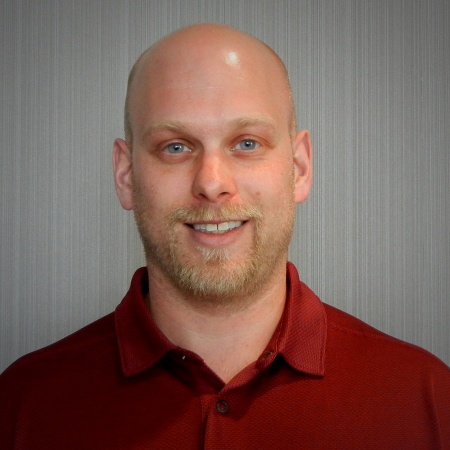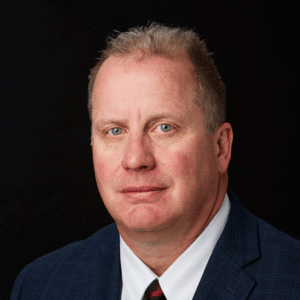FAQs About Electrochemical Grinding (ECG)
ECG Frequently Asked Questions
With the acquisitions of Tridex Technology and Everite Machine Products, Glebar expanded its grinding solutions to include Electrochemical Grinding (ECG). ECG combines abrasive grinding and electrochemical erosion producing a more efficient, cost-effective, and burr-free part.
Be sure to read our latest electrochemical grinding solutions by visiting our Case Studies page. Review frequently asked questions below, our electrochemical grinding machine offerings, as well as our Customer Care Solutions.
ECG is a combination of electrochemical (Anodic) dissolution of material with abrasive action. The metal is decomposed to some degree by the DC current flow between the conductive grinding wheel (Cathode) and the workpiece (Anode), and the presence of an electrolyte solution. The mechanical abrasive action removes some base metal and the oxidized material.
The 90/10 electrochemical/abrasive rule is a fallacy. The ratio of electrochemical to abrasive cutting is widely variable by parameter settings. Cutting at 2 volts would give a predominately abrasive cut, but if it produces the desired result it should be used. A cut at 15 volts would be much more electrochemical, but if gives the desired result it would be the correct setting. An ECG setup should focus on maintaining the correct balance of productivity, wheel wear, tolerance, surface finish, and metallurgical condition.
Voltage is typically 4-15v range, but 7-10 is most common. Increasing DC voltage increases the electrochemical activity. At too high a voltage (the spark over point), electrical arcing will occur, and the process becomes like EDM (which is never recommended). Voltage selection is sometimes material dependent, e.g. copper may require a lower voltage because it is highly conductive, but mostly voltage is adjusted to optimize other cutting parameters.
Amperage is never calculated. It varies throughout the cut depending on voltage, size of cut, feed rate, and other factors. The maximum amperage available varies by machine. Glebar’s ECG power supplies are available in 300, 600, and 1000-amp capacity. A higher capacity power supply will allow larger cuts, but other factors may limit how much power can be applied to the cut.
ECG wheels are classified as either conventional or super abrasive. A conventional ECG wheel is an abrasive (aluminum oxide, silicon carbide, or combination), copper and a resin bond. Super abrasive ECG wheels are diamond, CBN in a metal bond, or conductive resin bond form.
There are various electrolytes that can be used effectively. The most common is sodium nitrate based. This works well for most stainless and nickel alloys, steels, and aluminum. Sodium chloride can be added for materials such as titanium that don’t react as well electrochemically. Sodium chloride can be quite corrosive and creates a harsher environment for the machine and the operator than the sodium nitrate formulas.
The electrolyte life depends on several factors but mainly on how much metal has been cut and the type of filtration. Electrolyte can be used for long periods of time if it is kept clean and adjusted for concentration. Some electrolyte is lost to cutting, being carried away with the material. This is replaced by adding some new electrolyte, maybe a few liters per day. Evaporation can also reduce the electrolyte level, but this can be corrected by just adding water. Once the electrolyte is saturated with metals completely, it must be changed. This depends on the volume of metal cut, but for most customers one to two months is common. If you have an optional centrifuge for filtration, the electrolyte will last much longer. The centrifuge option greatly improves the electrolyte performance and reduces cleaning of the cut parts. Glebar’s ECG machines can measure electrolyte activity so the user can specify a preset point where the electrolyte should be changed.
Spent electrolyte must be disposed of as a hazardous waste because it contains dissolved metals, grinding sludge, and oxidizers. Disposal costs can be greatly reduced by distillation or evaporation of the water, thereby reducing disposal volume. Electrolyte life is greatly influenced by the level and type of filtration. Electrolyte can be used for long periods of time if it is kept clean and adjusted for concentration.
The ECG process causes much less wheel wear than conventional abrasive grinding. The actual amount of wheel wear will vary depending on the material being cut and the ECG parameters. Wheel wear is expressed as a ‘G’ ratio. This is the ratio of material removed divided by the amount of wheel consumed. For example, if 10 cubic inches of material are removed and two cubic inches of wheel was consumed then the ‘G’ ratio is 5. Using a standard aluminum oxide electrolytic wheel cutting stainless steel tubing, a ‘G’ ratio of 10 to 15 would be typical. A diamond or super-abrasive wheel may give ‘G’ ratios as high as 100. A cutoff wheel used on very small tube .016″ (0.4mm) could easily last for 500,000 parts. The same wheel for .080″ (2mm) solid wire would make possibly 25,000 cuts. The wheel usage depends also on how fast you cut, what edge condition is required, and length tolerance. If you cut at a slower rate, the wheel will last longer but the production time is always more valuable than the consumable cutting wheel.
The wheel price varies by type. The standard wheels (aluminum oxide/copper) are about $130. A CBN (synthetic diamond) wheel is approximately $300, but they last much longer.
This depends greatly on the material being cut, the size and depth of cut, and the ECG parameters being used. Tolerances of +/-.0015” (+/-0.04mm) are commonly maintained. On small cuts, tolerances of .0005” (.013mm) can be achieved, but generally tolerances of less than .001” (0.05mm) must be evaluated per application.
Almost any conductive material can cut with ECG. Alloys high in nickel, chrome, and cobalt such as stainless steels, Inconel, and Hastelloy cut very freely with ECG. Titanium, nickel/titanium, zirconium, and tungsten do not cut as easily as other metals but can be cut effectively.
Since the voltages are less than 20 volts DC, the risk of shock is very low. Proper safety procedures should always be followed.
EDM and laser both cut metal by vaporizing the material at extremely high temperatures. This results in a re-cast layer and a heat affected zone on the material surface. ECG is a low temperature process that never results in metallurgical damage. ECG is usually much faster than an EDM cut but typically less accurate. Laser cutting can be very fast and accurate, but it is normally limited to thin materials. Waterjet cutting can be quite fast and usually leaves no metallurgical damage, but the consumable costs can be very high. In addition, the cuts are limited to jigsaw type cuts much like Wire EDM. ECG is a more accurate process than Waterjet.
The most common reason customers choose ECG is for the burr free quality of the cut. If a part is difficult or costly to deburr, then ECG may be the best option. On materials that are difficult to machine by conventional methods, work harden easily, or are subject to heat damage from machining, then ECG may be the solution. The minimal cutting forces in the ECG process make it ideal for thin wall and delicate parts.
There is not an exact answer for this because the machine will not usually run at full load. At full load, the machine will use approximately 13 kw/h. More realistically, for most small tube applications, the machine would use 3.5 to 5 kw/h.
The machine does not need to be ‘warmed-up,’ but it is good practice to run the spindle and the electrolyte for a few minutes prior to cutting. You would also start the filter pumps and centrifuge (if equipped) during the warm-up time.
The typical cutoff machine has the optional motorized conveyor to carry away the cut parts, which are placed in a rinse tank of fresh water. Afterwards, the parts would be cleaned by a wash system. We recommend ultrasonic washing. The electrolyte is very soluble and not hard to clean from the parts; however, very small diameter tubes are harder to clean that solid wire or large tubes. Ultrasonic washing is especially useful for small tubes.
Electrochemical grinding (ECG) and electrochemical machining (ECM) are two non-conventional manufacturing processes with some similarities and differences. While both utilize electrochemistry to dissolve metal, the fundamental difference between ECG and ECM lies in their tooling; ECG utilizes a rotating abrasive wheel, while ECM utilizes a tool that is shaped as the inverse of the desired geometry. In our blog post, we’ll compare these similar, but distinctive, technologies and their unique advantages, disadvantages, and applications.



